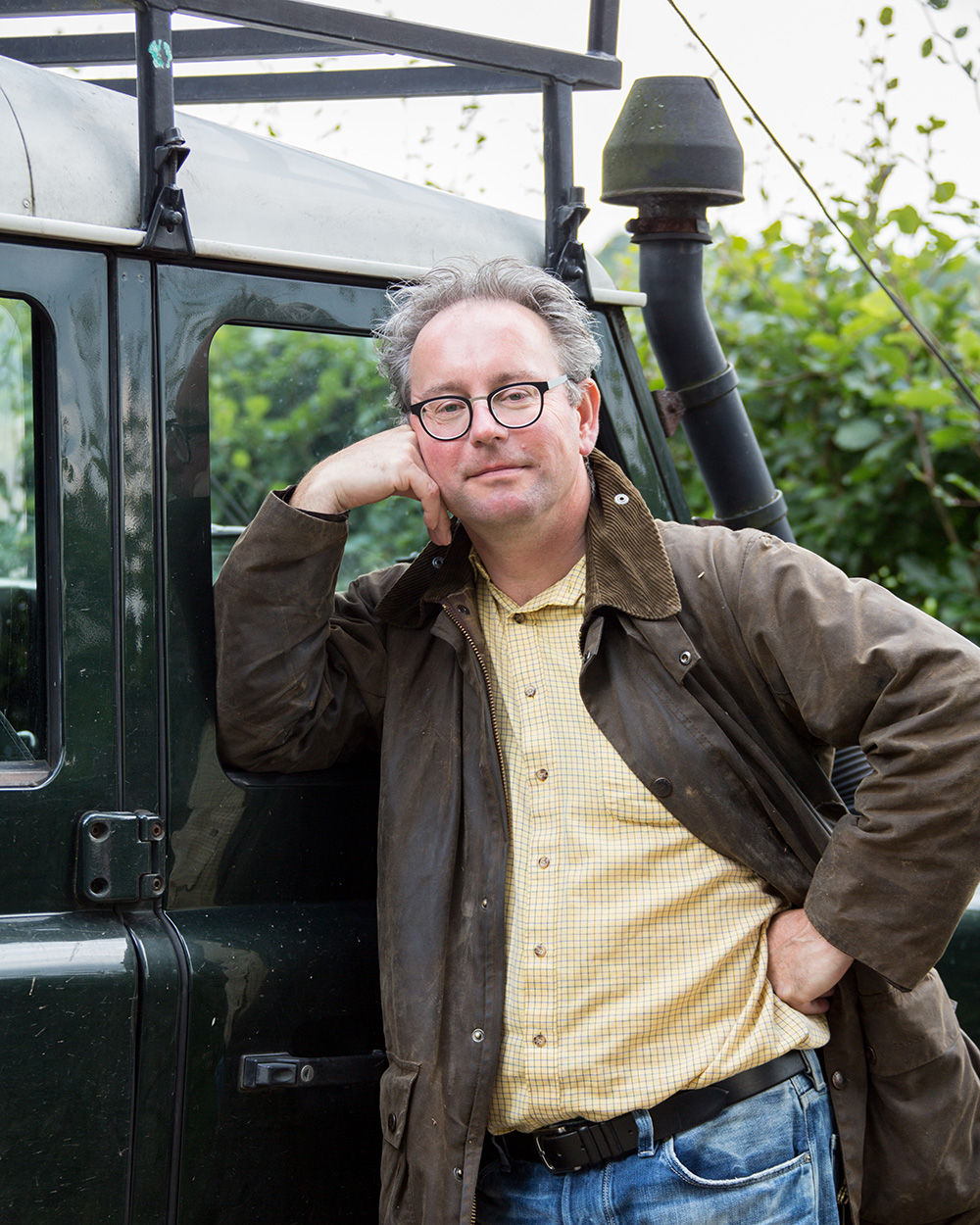Great leap forward - carriage project De Haar part 1
By: Mario Broekhuis
It is almost a shock, when the Stolks turn in their report of what has been done to the Calèche of Castle de Haar, that is how far they have progressed. Experience with the Yachtbreak and the Grand Duc has shown that restoration is a slow process. But with the largest and most exclusive of the carriages, a great leap forward has been made in a matter of weeks.
"Around all the damage, first the paint on the body is consolidated before we touch anything else. Then you start working from top to bottom and inside to outside. So first the hood and then the upholstery and so on," Maria Stolk explained. The leather hood of the car looked a bit worn. Folding damage, Maria calls it, to point out that there are no tears in it and thus it is still fine. The right polish worked wonders in this case. But simply greasing is not always wise, as can be seen on the interior upholstery. The restorer crawls into the carriage, with a light on her forehead to point out what she has cleaned: "There was a thick layer of black leather grease on the saffiano leather upholstery, once applied to camouflage the wear spots. So this coach has been used quite a lot, judging by the wear and tear on the upholstery. And as you can see, spots of this black leather grease got into the headliner of the hood and the passement was also greased along with it."
In summary, it was a bit of a filthy mess inside. By now it's nice and clean again. Maria does not criticize whoever took care of the carriage over the decades. Rather, she praises the invention of the simple headlamp: "Without a lamp like that on your head, it's so dark under a hood that you're smearing the sky and the passement as well, without noticing."
"Furthermore, the upholstery contained a good number of decayed buttons," and she shows how those later buttons have been replaced with the correct ones lined with saffiano (= goatskin) leather. The moth holes in the cloth fabric of the headliner were also camouflaged.
Although on one point she is critical: "The hood frame apparently came loose once and, unfortunately, was 'hammered' heavily, leaving many pits in the brass. You should never hit such a frame directly with a hammer, brass is too soft for that. We still achieved reasonable results with polishing and buffing."
A setback, which at the same time showed how necessary the restoration is, came when lifting the body. The leather straps in which the coach hangs were almost worn through and were about to snap. When that happens, the damage is enormous. But fortunately. The contingency item now includes four new straps, just as we are still waiting for new straps for the Grand Duc. Of course, all these thick belts will be made at once. Who still stitches such belts by hand? For that the old saddle maker Kees Groeneveld was found, a craftsman who has been doing 'leather and rope work' on the Zuiderdiep in Groningen since 1959. It couldn't be more authentic.
 Mario Broekhuis (51), a stewardship graduate, feels completely at home at a historic country estate like De Haar. Moreover, he knows alles of carriagesand can tell wonderful stories about it. That's why Mario gives us a monthly update on the progress of the restoration of three carriages for De Haar on this page. The three carriages in this project come from the management of Borg and Nationaal Rijtuigmuseum Nienoord and are transferred to long-term loan by Kasteel de Haar. This project has been made possible by VZW Pater Davids, Prins Bernhard Cultuurfonds, VSBfonds, Stichting Bonhomme Tielens and Stichting Kasteel de Haar. The Hippomobile Heritage Foundation is supervising the implementation and providing communication.
Mario Broekhuis (51), a stewardship graduate, feels completely at home at a historic country estate like De Haar. Moreover, he knows alles of carriagesand can tell wonderful stories about it. That's why Mario gives us a monthly update on the progress of the restoration of three carriages for De Haar on this page. The three carriages in this project come from the management of Borg and Nationaal Rijtuigmuseum Nienoord and are transferred to long-term loan by Kasteel de Haar. This project has been made possible by VZW Pater Davids, Prins Bernhard Cultuurfonds, VSBfonds, Stichting Bonhomme Tielens and Stichting Kasteel de Haar. The Hippomobile Heritage Foundation is supervising the implementation and providing communication.
